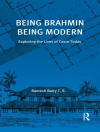The coupling of mass spectrometry or nuclear magnetic resonance to chromatography has broadened the possibilities for determining organic reaction mechanisms. And while many results have been published reporting these, even more can be achieved through modern computational methods. Combining computational and theoretical techniques with advanced chromatographic methods offers a powerful tool for quantitatively determining molecular interactions .
This book presents the possibilities for characterising biological applications by combining analytical and computational chemistries. Written by the author of “HPLC: A Practical Guide” (RSC, 1999), the book examines not only the behaviour of biological reactions per se, but also describes the behaviour of biological molecules in chromatography systems. Various software packages are reviewed, and most computations can be performed on a standard PC using accessible software. Consideration is given to a variety of chromatographic techniques and strategies for high-sensitivity detection are presented.
The first book of its kind, it will inspire readers to explore the possibilities of combining these techniques in their own work, whether at an industrial or academic level.
Table of Content
Preface; Introduction; Basic Concept of Moelcuar Interaction Energy Values; Design Model-Phases in Chromatography; Retention in Gas Chromatography; Retention in Normal-Phase Liquid Chromatography; Retention in Reversed-Phase Liquid Chromatography; Retention in Ion-Exchange Liquid Chromatography; Enantiomer Recognition; Human Serum Albumin-Drug Binding Affinity Based on Liquid Chromatography; Affinity and Reactivity of Proteins; Mechanism of Highly Sensitive Detection; Appendix; Subject Index












